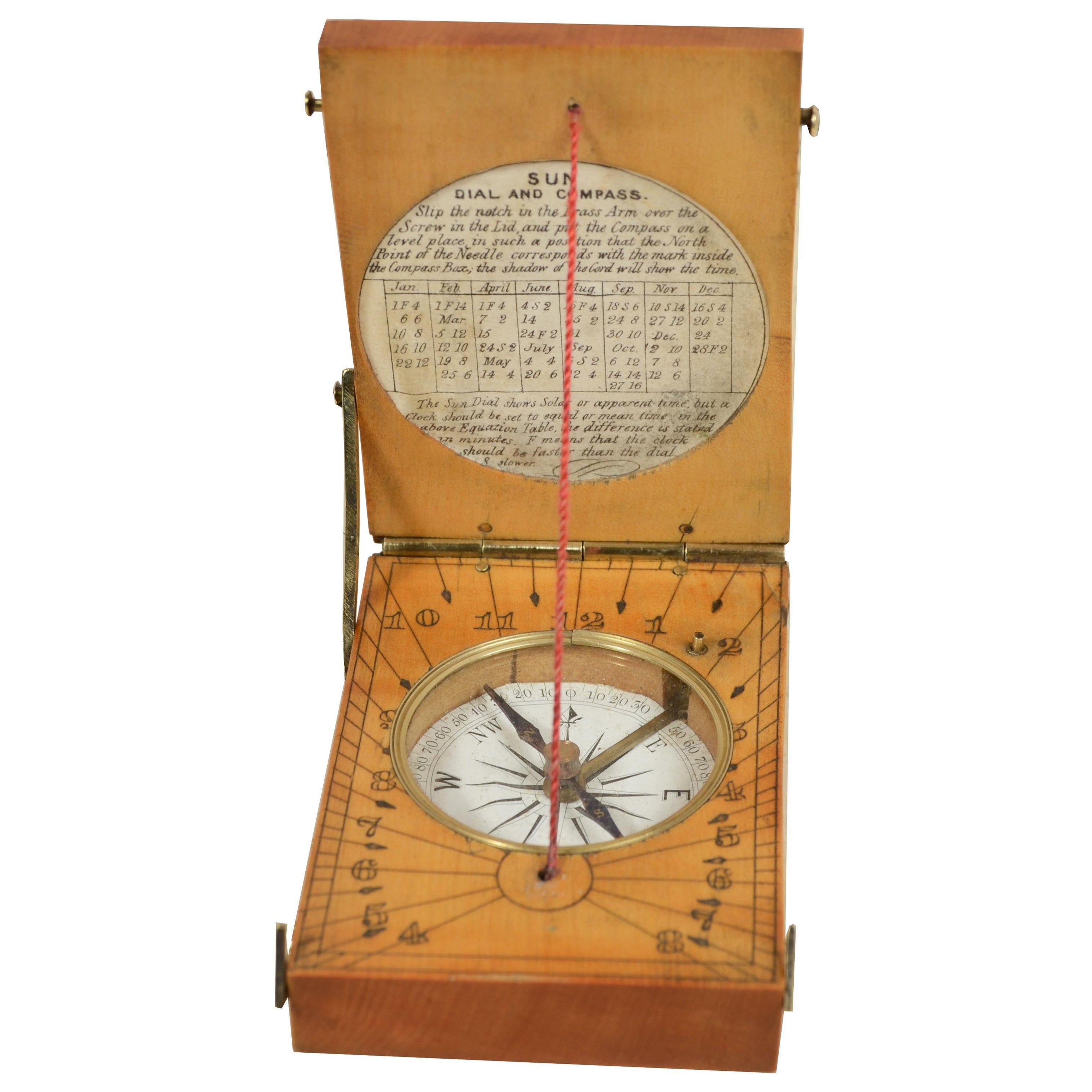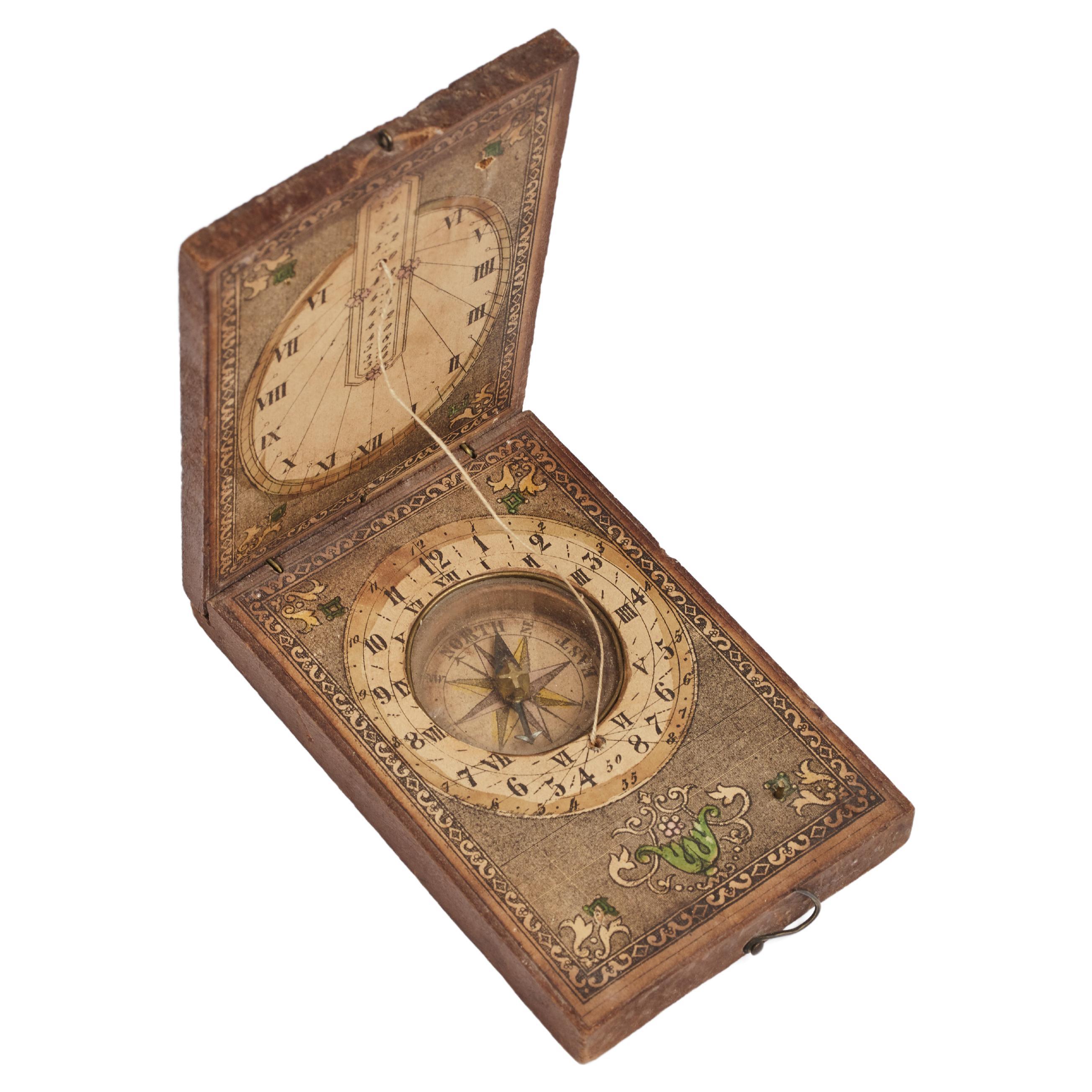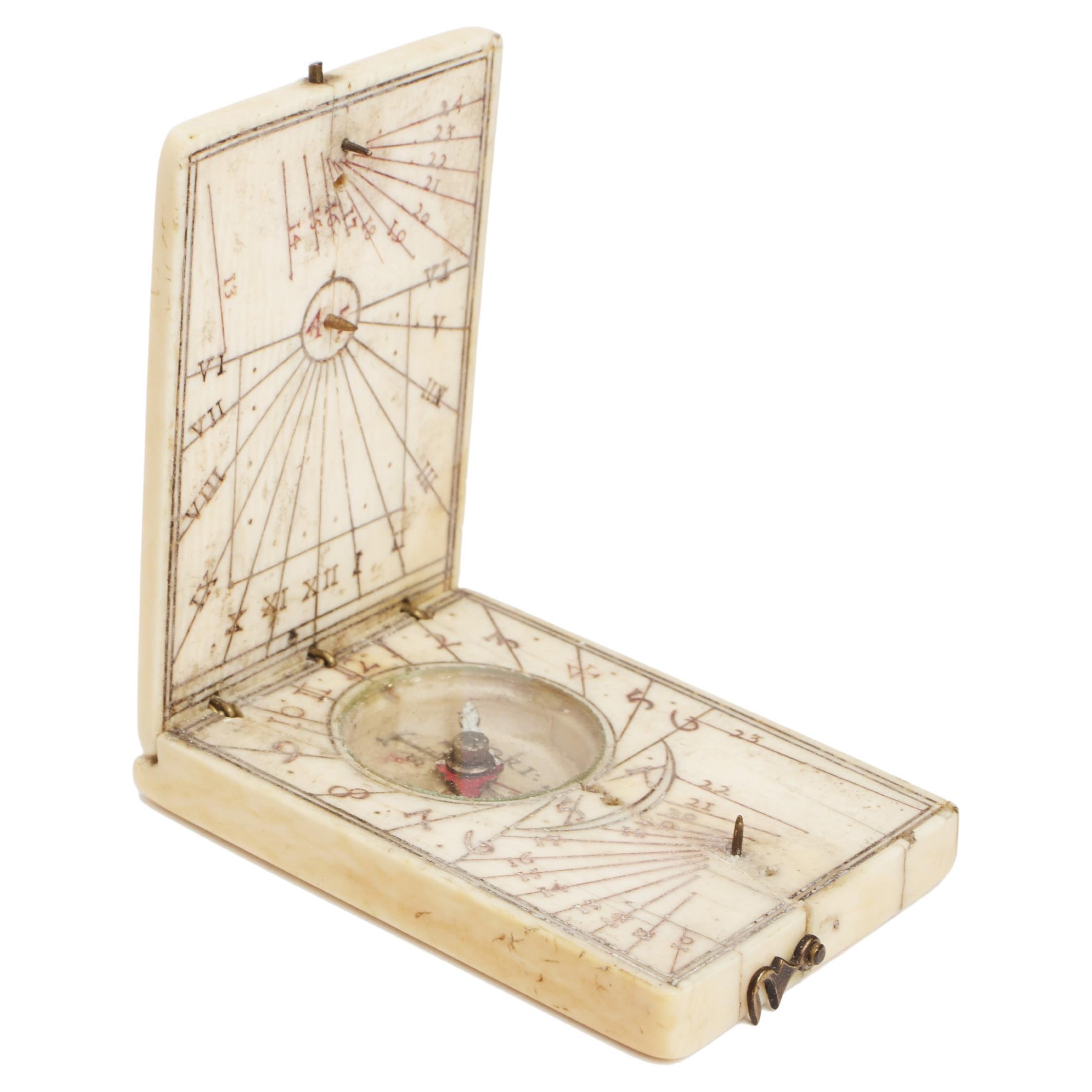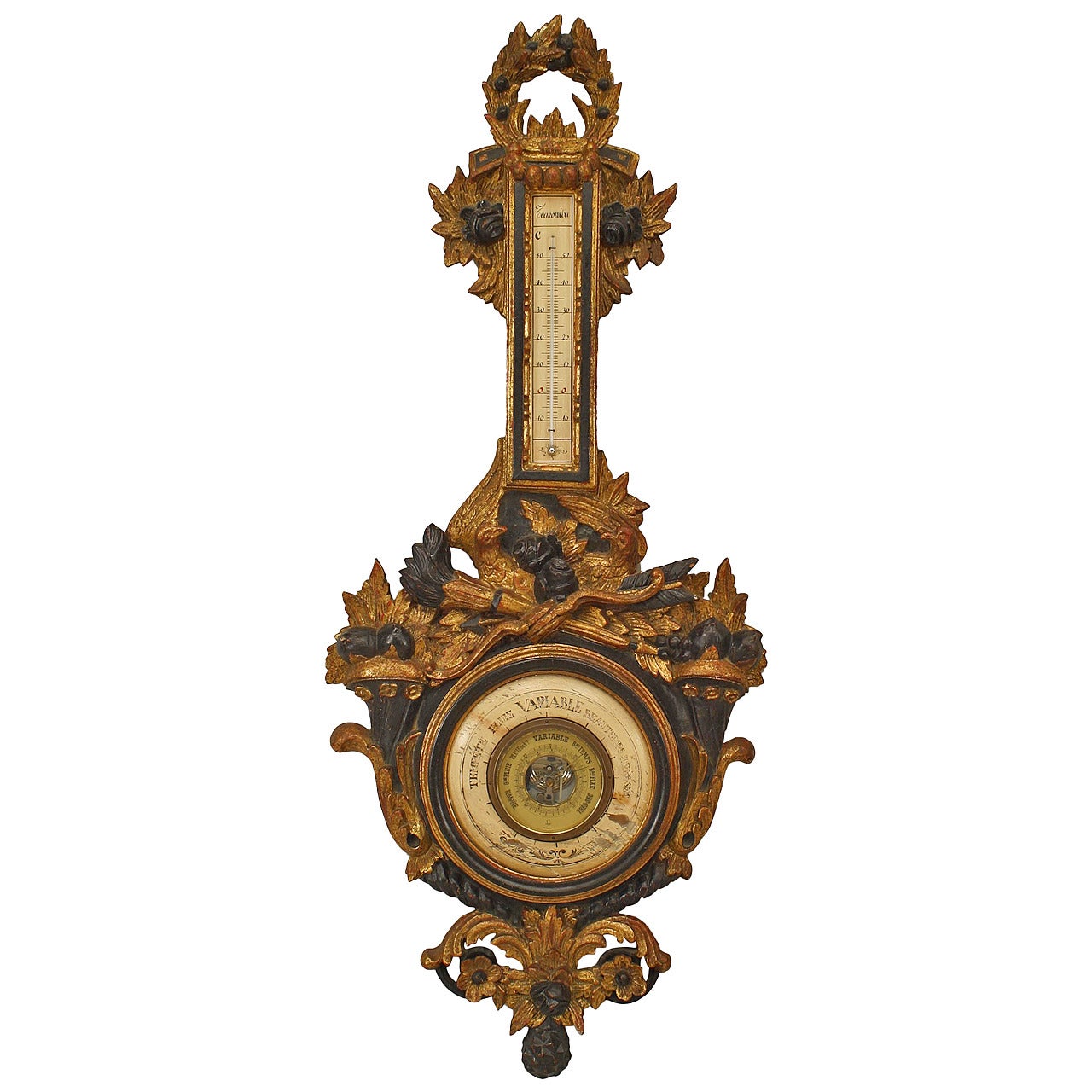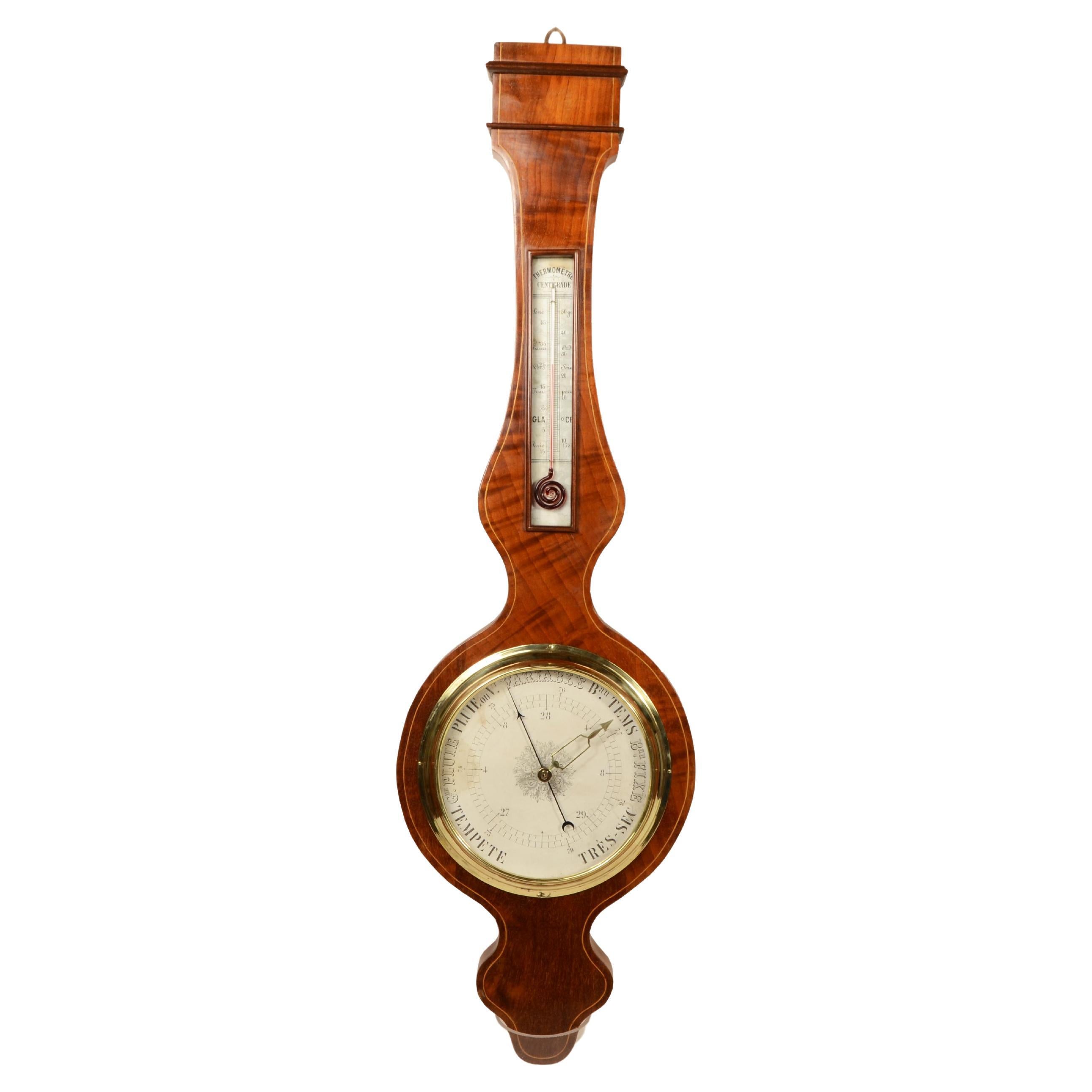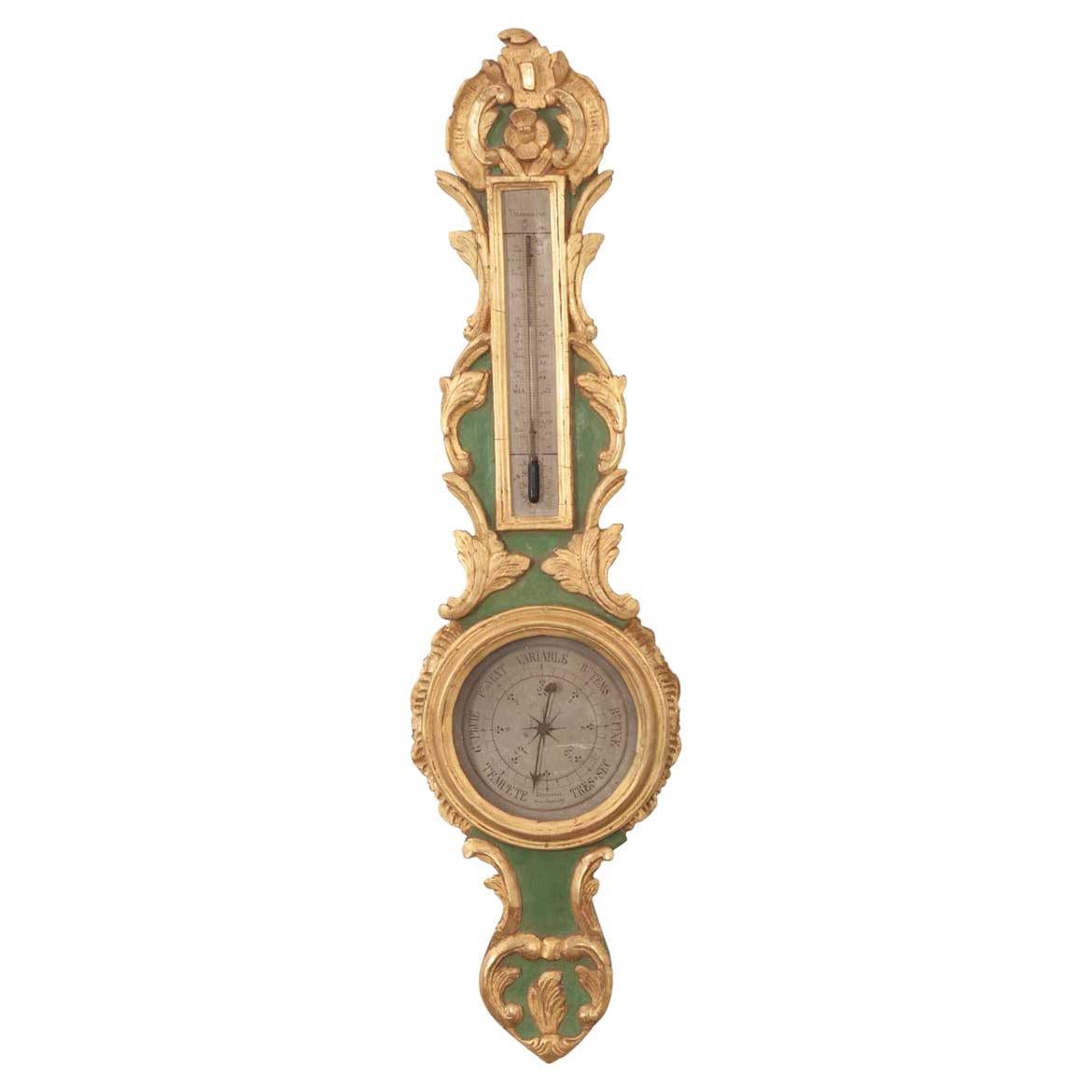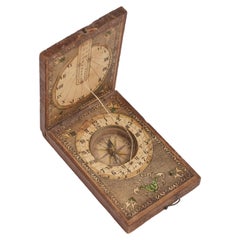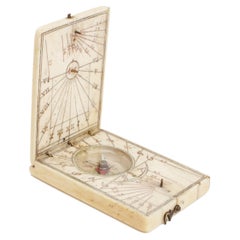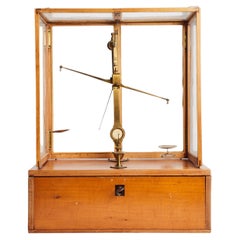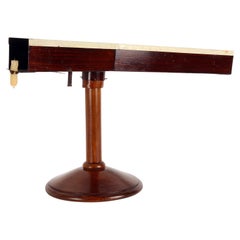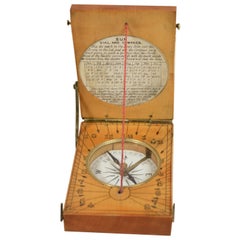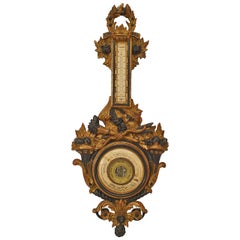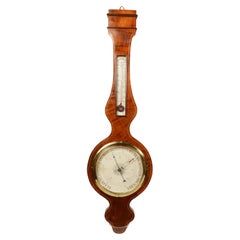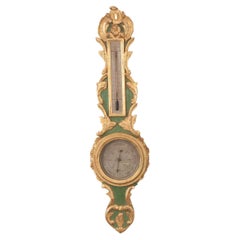Items Similar to Italian-transalpine time dial paper on wood board. Giusti, Nerici, Italy 1781.
Want more images or videos?
Request additional images or videos from the seller
1 of 16
Italian-transalpine time dial paper on wood board. Giusti, Nerici, Italy 1781.
$7,923.31
£5,975.62
€6,800
CA$10,954.66
A$12,271.06
CHF 6,445.21
MX$149,212.19
NOK 81,617.36
SEK 77,476.82
DKK 51,766.05
About the Item
An Italian and transalpine hour dial in paper printed on a fruitwood board. The base, in turned boxwood, has a wavy profile and distinct edge, at the top of which is mounted the rectangular section brass arm with double adjustment, that of the front-back inclination and that of the rotation of the board. On the front of the board is applied a print on paper of both the Italian and transalpine dial according to the Abbot Giovanni Francesco Giusti. This type of instrument is called a quadrant for its quarter circle shape, a sort of astrolabe folded twice on itself. From this derives its configuration.
At the top left is fixed a cord with a small free-sliding pearl and a weight at the end below. As we read in the cartouche at the top left, the pearl must be positioned on the day of the month to have the morning and evening hours. The second cartouche at the top left reads:
“Exact Italian and Oltremontano Quadrant to precisely regulate wheel clocks at all Hours of the day. Built according to the Tables of Mr. Abbot Gio: Franc.o Giusti at the height of the Pole of the City of Lucca”
And the cartouche at the bottom right of the engraver: “Presso Bart.o Nerici Engraver Lucca 1781 made”. Author: Abbot Antonio Francesco Giusti. Engraver: Bartolomeo Nerici. Lucca, Italy 1781.
- Dimensions:Height: 17.75 in (45.09 cm)Width: 7 in (17.78 cm)Depth: 4.25 in (10.8 cm)
- Materials and Techniques:
- Place of Origin:
- Period:1780-1789
- Date of Manufacture:1781
- Condition:Wear consistent with age and use.
- Seller Location:Milan, IT
- Reference Number:1stDibs: LU917145073422
About the Seller
5.0
Vetted Professional Seller
Every seller passes strict standards for authenticity and reliability
Established in 1991
1stDibs seller since 2011
246 sales on 1stDibs
Typical response time: 1 hour
- ShippingRetrieving quote...Shipping from: Milan, Italy
- Return Policy
Authenticity Guarantee
In the unlikely event there’s an issue with an item’s authenticity, contact us within 1 year for a full refund. DetailsMoney-Back Guarantee
If your item is not as described, is damaged in transit, or does not arrive, contact us within 7 days for a full refund. Details24-Hour Cancellation
You have a 24-hour grace period in which to reconsider your purchase, with no questions asked.Vetted Professional Sellers
Our world-class sellers must adhere to strict standards for service and quality, maintaining the integrity of our listings.Price-Match Guarantee
If you find that a seller listed the same item for a lower price elsewhere, we’ll match it.Trusted Global Delivery
Our best-in-class carrier network provides specialized shipping options worldwide, including custom delivery.More From This Seller
View All: Wooden pocket diptych sundial Ernst Christoph Stocket. Germany 1780 - 1811.
Located in Milan, IT
Wooden pocket diptych sundial Ernst Christoph Stocket - type, Bavaria. A folding wooden sundial is partially covered in paper with engraved/printed decorations and text. A compass is...
Category
Antique Late 18th Century German Scientific Instruments
Materials
Wood, Paper
An ivory dyptich sundial, Germany, 17th century.
Located in Milan, IT
Ivory diptych sundial for latitude 48 degrees with vertical and horizontal dials, pin gnomon for Italian hours and lunar volvelle. Compass needle and glass cover. On the plain back ...
Category
Antique Early 17th Century German Scientific Instruments
Materials
Ivory
Precision demountable scale for travel, France 1880.
Located in Milan, IT
Apothecary traveling scale entirely demountable. All the pieces fits inside the front drawer. Oak wood box, brass elements and glasses. Glass protection sides. France 1880.
Category
Antique Late 19th Century French Scientific Instruments
Materials
Brass
Scientific tool for demonstrating the refraction of light, Italy 1920.
Located in Milan, IT
Scientific tool for demonstrating and assessing the refraction of light. Constructed in boxed metal with a square section, it consists of a horizontal tube that bends a few grids in ...
Category
Early 20th Century Italian Scientific Instruments
Materials
Metal
Scientific Tool for the Refraction of Light, Italy 1920
Located in Milan, IT
Scientific tool for demonstrating and assessing the refraction of light. Constructed in boxed metal with a square section, it consists of a horizontal...
Category
Vintage 1920s Italian Scientific Instruments
Materials
Metal
A barometer signed jecker, Paris 1800.
Located in Milan, IT
Antique mahogany wall barometer composed of a glass tube containing mercury with its reserve. On the upper part a gable-shaped pediment and a screwed brass plate with a small alcohol...
Category
Antique Early 19th Century French Scientific Instruments
Materials
Brass
You May Also Like
Engraved boxwood sun clock English manufacture mid-19th century.
Located in Milan, IT
Engraved boxwood diptych sun clock with brass hinges and locking hooks, book-shaped, mid-19th-century English manufacture. The clock has an orientation compass inserted in the base w...
Category
Antique Mid-19th Century Scientific Instruments
Materials
Wood
Italian Venetian Gilt Wood Barometer
Located in Queens, NY
Italian Venetian-style (20th Century) gilt carved and black painted barometer,with wreath top and cornucopia sides with scroll motifs.
Category
20th Century Italian Neoclassical Scientific Instruments
Materials
Giltwood
Torricellian barometer French manufacture from the second half of the 19th century
Located in Milan, IT
Torricellian mercury barometer, French manufacture from the second half of the 19th century, made of mahogany veneer wood with cedar wood edge threading complete with rare thermomet...
Category
Antique 1870s Scientific Instruments
Materials
Wood
French 19th Century Barometer
Located in Baton Rouge, LA
French 19th painted and gold gilt barometer and thermometer. It is a recognizable ‘banjo’ shaped scientific instrument with all the carved details in gold ...
Category
Antique 19th Century French Other Scientific Instruments
Materials
Glass, Wood, Giltwood, Paint
Mechanical Equatorial Sundial, Johann Michael Bergauer, Ante 1745
By Johann Michael Bergauer
Located in Milano, IT
Johann Michael Bergauer (Simonsfeld, 1676 - Innsbruck, 1745 circa)
Mechanical equatorial sundial
Signed: Michael Bergauer Insprugg? Innsbruck?
Ante 1745
Gilded and silvered brass; glass.
Measures: closed 1.29 x 3.50 x 4.92 in (33 x 89 x 125 mm); open 5.19 x 3.50 x 3.81 in (132 x 89 x 97 mm).
Weight: the sundial 0.49 lb (224 g); the case 0, 20 lb (95 g)
Original wooden case covered in brown leather.
State of conservation: very good. It has some signs of use. The spring that allowed for the two parts of the instrument to remain open is missing (absent even in the comparative specimens kept in museums).
The sundial is composed of two overlapping plates hinged together on the north edge.
The base plate is octagonal and is supported by three turned legs. The upper face is gilded and a compass with a magnetic variation index has been inserted. The rest of the surface is occupied by a rich decoration of engraved scrolls, centered around the inscription “Michael Bergauer Insprugg”. A foldable oval support with a plumb-bob is attached with a hinge on the southern edge. On the reverse of the base plate a table of the latitudes of some European cities (expanded with the vertical writing “Meiland 40” on the edge and “Rome” deleted) and of Jerusalem has been engraved. A Cam marked for 0 °-70 ° is applied near the northern edge. This can be adjusted to change the inclination of the upper plate according to the latitude; originally a spring, now lost, made it possible to keep the two plates of the clock open.
The second plate is round, has a toothed edge and measures 3.26 in (83 mm) in diameter: it is slightly smaller than the octagonal base which it rests upon and overlaps when the instrument is closed.
The recto is gilded and there are three concentric graduated circles engraved on it:
- the outermost is the equatorial hour dial, numbered I-XII, I-XII;
- the second-one is that of days 1-30 of the lunar month and has “Aetas lunae” engraved on it;
- the third, silvered, is a subsidiary hour dial, with double numbering 1-12; originally it could have been rotated.
The engravings of the first two circles are enameled in red.
In the center - on the polar axis - there is an alidade, at the end of which is associated the silvered minute dial. This, in turn, is welded, perpendicularly, to a small disc, also silvered, with a triangular gnomon. The plate, alidade and minute dial are connected to each other by toothed mechanisms.
Below is the procedure for measuring the time:
1) Adjust the Cam under the base of the clock, based on the latitude of your location;
2) Place the watch on a flat surface using the plumb-bob and with the side closest to the compass facing south;
3) Keeping the instrument still, manually rotate the alidade until the shadow cast by the triangular gnomon on the small silvered disc falls on the line marked below it;
4) The hour and minutes can therefore be read on the hour and minute dials set on the alidade respectively.
Johann Michael Bergauer, who sometimes only signs his works as Michael Bergauer, was born in Simonsfeld, north of Vienna. His apprenticeship as a watchmaker took place in Landshut and he probably worked as a laborer in Augsburg before becoming a watchmaker at the court of Karl Philipp von der Pfalz in Innsbruck in 1708. In the following years, his repeated attempts to obtain Innsbruck citizenship are documented and, in 1721, he is listed as a resident. In 1724 he was admitted to the guild of watchmakers, with which however he had continuous problems. In 1732 he presented a "masterpiece". This is the last reference to his business; he must have died before or in 1745 because in that year his widow appealed to the City Council.
The mechanical sundial...
Category
Antique 1730s Austrian Baroque Scientific Instruments
Materials
Brass
Torricellian barometer signed Heineman Strada Toledo 213 Naples mid-nineteenth century.
Located in Milan, IT
Torricellian mercury barometer signed Heineman Strada Toledo 213 Naples for the Italian market, in mahogany wood from the mid 19th cent. complete with reading nonius for checking p...
Category
Antique Mid-19th Century Scientific Instruments
Materials
Wood
More Ways To Browse
Antique Sorter
Pearl Clock
Antique Italian Clock
Antique Italian Clocks
Antique Brass Pole
Antique Sorting Table
Astrolabe Table
Brass Astrolabe
Antique Field Camera
Antique Lorgnette Folding Glasses
Antique Pomanders
Apothecary Balance
Barograph And Barometer
Black Forest Thermometer
English Binoculars
French Brass Compass
Italian Barometer
Plumb Bob
